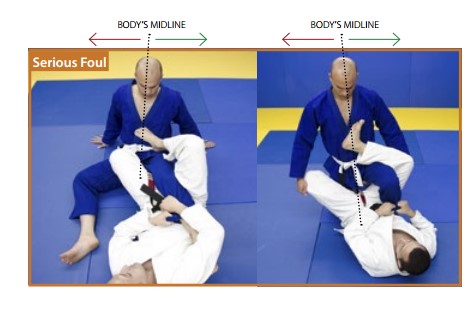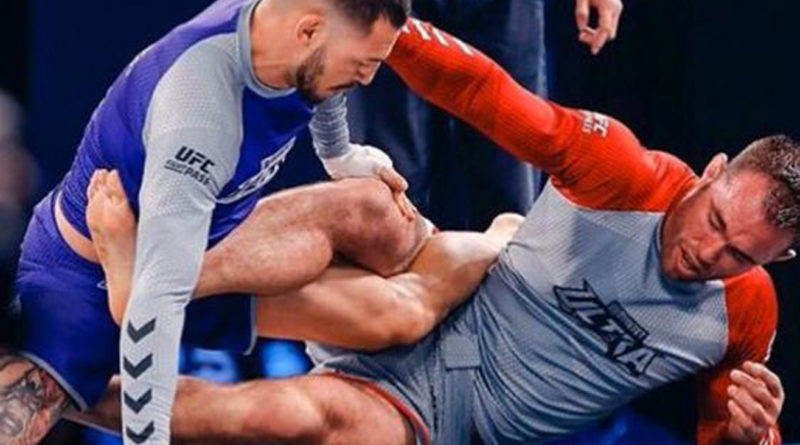Knee Reaping: What’s The Big Deal?
The IBJJF is undoubtedly the biggest BJJ organisation on the planet and despite many promotions putting on “World Championships”, the IBJJF World Championships are widely regarded as the truest form of that phrase. It’s strange then, that the IBJJF flatly outlaws reaping the knee at all belt levels. The IBJJF rulebook defines knee-reaping as “when one of the athletes places his thigh behind the leg of his opponent and passes his calf on top of the opponent’s body above the knee, placing his foot beyond the vertical midline of the opponent’s body and applying pressure on his opponents knee from the outside, true inside, while keeping the foot of the leg at risk stuck between his hip and armpit.”
For clearer reference, the IBJJF rulebrook also provides the following diagram:

It’s no secret that reaping the knee can have catastrophic effects if the person being reaped doesn’t recognize the danger or react correctly. Just ask Cub Swanson, who suffered a full ACL and meniscus tear when Jake Shields used the knee reap to try and sweep him at Quintet Ultra. It’s because of the fear of this kind of injury that several “old school” coaches won’t practice leglocks at all, or reserve it as something that they’ll only teach upper belts. This isn’t a fringe opinion either, even Jean-Jacques Machado believes that people shouldn’t learn leglocks until blue belt.
It’s not all that surprising that there is a widespread fear of leglocks in general and particularly reaping the knee when even the simplest MCL tear can leave you sidelined for a fortnight, the most serious being three months or more. The more serious cousin of the MCL tear, the ACL tear, can force you out of training for up to a year and might even require reconstructive surgery. With this in mind, it does make sense why so many BJJ hobbyists are afraid of leglocks and would probably support the IBJJF in banning knee reaping.
In the above video, the most feared leglocker in modern MMA, Ryan Hall, explains his belief that this widespread fear of leglocks and in particular knee-reaping is completely unnecessary. He mentions having seen far more injuries from Kimuras and Guillotines than leglocks. He also says something we can all agree with, that thanks to the ability to tap and end the fight, your safety is always in your own hands. He even goes on to point out that generally, leglocks are the area that Brazilian competitors don’t fare well in and coincidentally, also the area that’s limited by the IBJJF. He questions whether this is as a result of the IBJJF’s rules, or whether the rules were put there to protect those deficiencies in the first place.
Thanks in some part to the IBJJF’s rules, we’re only recently seeing a surge of expert leglockers excel in modern MMA. From the aforementioned Ryan Hall in the UFC to the first of John Danaher’s squad to make the move to MMA, Garry Tonon over at ONE FC. This shows that contrary to what some of the best fighters on the planet like Luke Rockhold think, leglocks are a huge part of MMA and of course, BJJ. It’s partly because of this and the growing popularity of grappling events with more inclusive rulesets that the IBJJF needs to adapt, sooner rather than later.
It’s not just the IBJJF that needs to adapt however, coaches need to adapt too. With more coaches teaching the concept of knee-reaping and how it can be defended against, or even just simply how to accept the reap and prevent injury, the actual rate of injury should decrease. As more grapplers are familiar with it, more will react correctly and prevent themselves from being injured. This is an important piece of the puzzle as our sport grows: learn leglocks, learn how to defend, learn when to tap and as a result, learn not to be afraid of knee-reaping.

